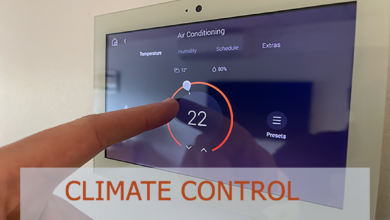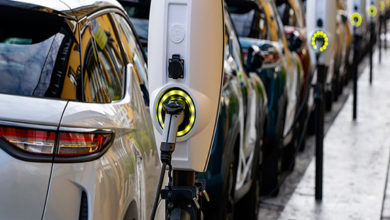Solar PV in 2024

Solar P.V.
Photovoltaic electricity, also known as Solar PV, is driving the global transition to renewable energy. And it is creating similar trends in the energy sector.
Solar PV is when semiconductor materials are used to convert sunlight into electrical energy. This process is called the photoelectric effect. It has revolutionized the way we think about energy production. Different from general energy sources that rely on fossil fuels. Solar PV energy takes advantage of the abundant free energy from the sun.
PV technology
The photoelectric phenomenon was first discovered by French physicist Edmund Becquerel in 1839. However, SPV technology was not created until the mid-20th century, with the first practical solar cell developed by Bell. Labs in 1954, then space exploration, solar PV from special applications of clean energy production has become the main solution.
How does PV work?
The way solar energy works may seem complicated. But it’s all based on a simple scientific principle. That is how sunlight is manipulated to produce electricity.
The photoelectric effect is explained.
The photoelectric effect occurs when photons from sunlight release electrons from atoms inside the solar cell. These free electrons are then captured to create an electric current. This electricity is controlled and can be used to power everything from small appliances to entire homes.
System components
A solar PV system consists of several key components:
Panels: These are the most visible part of the system and contain solar cells that capture sunlight.
Inverter: Converts direct current (DC) electricity generated by panels to alternating current (AC) for home and business use.
Installation system: Make sure the solar panel is firmly attached to the roof or ground.
battery storage (Optional): Store excess electricity produced during the day for use at night or overcast.
change system
There are many types of solar energy systems. Each type is customized for a specific purpose.
Netting system
Grid tied systems are the most common type of solar PV installation. These systems are connected to the local electrical grid. It allows homeowners to use solar energy during the day. and pull it out of the network when necessary. Surplus electricity produced can be sold to utility companies through a process called net metering.
Off-grid PV system
Off-grid systems operate independently of the utility network. These systems are generally used in remote locations where networks are not accessible. Off-grid setups rely heavily on battery storage to ensure a continuous power supply.
Polycrystalline window panes
Polycrystalline film is made from polycrystalline structure. These panels are slightly less efficient than monocrystalline panels, though. But it is more affordable. This makes it a popular choice for budget-conscious consumers.
Hybrid PV system
Hybrid systems combine the best of both worlds. They are connected to the grid but also include battery storage. It is a backup power source during power outages. And helps to manage energy more efficiently…
Solar panels
The type of solar panel used in a PV system can inevitably affect its production efficiency and electrical charge.
Monocrystalline film
Single crystal panels are known for their high quality and elegant appearance. Made from a single pure crystal structure. This allows more sunlight to be converted into electricity than any other type.
Thin film panel
Thin films are formed by depositing a thin layer of photoelectric material on a surface. These panels are lightweight and flexible. This makes them suitable for specific applications such as solar windows or curved surfaces.
Benefit:
Solar PV has many benefits for the environment and your wallet.
Economic benefits
Although the initial cost of installing a solar PV system can be high, But the long-term savings are significant. A solar power system can significantly reduce or eliminate your electric bill. And many regions offer incentives and tax breaks to help offset installation costs…
Environmental Benefits
Switching to solar PV significantly reduces carbon emissions and reliance on fossil fuels. Solar energy is a clean, renewable resource that does not produce harmful pollutants or greenhouse gases.
Management of PV Systems
Regular upkeep is needed to keep your solar PV system operating efficiently for years to come.
Cleaning and maintenance
It is important to keep your solar panels clean to ensure they capture as much sunlight as possible. Dust, dirt, and grime can significantly reduce the efficiency of your system.
Regular inspection
Regular inspections are important to identify critical problems before they become serious problems. This includes panel inspection. Inverter and electrical wires for signs of wear or damage.
Inverter maintenance
The inverter is a critical component of your solar PV system and requires regular maintenance to ensure the system continues to function efficiently. This includes checking for software updates and making sure the cooling system is working properly.
Adoption issues
Although it has many advantages, Solar PV also has disadvantages.
Interruption and energy storage
Additionally, solar PV systems rely on sunlight. This means it will produce less power on cloudy days and no power at night. Energy storage solutions such as batteries can reduce this disruption. But these will increase the overall cost.
Initial cost
However, the upfront costs of a solar PV system include the panels, inverters, and and installation This can be a hindrance for some homeowners and businesses. But the price continues to drop. And financing options are becoming more accessible.
The screen should be placed in an area that receives the most direct sunlight throughout the day.
Propeller orientation and inclination
The orientation and tilt of the solar panels is important to maximize sunlight capture. in the northern hemisphere In general, the route should face south and be inclined at an angle consistent with your latitude.
READ MORE ABOUT WIND POWER HERE
Quiz
How much maintenance does a solar PV system require?
Solar PV systems require essential maintenance. Usually only regular inspections and periodic cleaning are required to ensure optimum performance.
Solar PV and power grids
Photovoltaic systems can have significant positive and negative impacts on the energy grid.
Pure light metering
Net metering is a billing mechanism that allows homeowners to sell excess solar energy back into the grid. This can help offset installation costs and provide an additional source of income.
Impact on energy prices
Widespread use of solar PV energy could result in lower energy prices. Because it will reduce the demand for electricity from general sources. But this also poses challenges for utility companies. This may require them to adapt their business models to the changing energy landscape.
Residential vs. commercial use
Although solar PV can be used in both residential and commercial applications, But the systems used for each are often very different.
Housing system
Residential systems are generally smaller and designed to meet the energy needs of a single household. These systems are usually installed on the roof and connected to the local utility network.
Government policies and incentives
Governments around the world offer various incentives. To support the use of solar energy technology.
Quiz
What is the life expectancy of a solar PV system?
Solar PV typically has a lifespan of 25 to 30 years, although some, such as inverters, It may need to be replaced sooner than that.
Can the Solar PV system work during a power outage?
Standard grid tie systems will not operate during a power outage. Unless paired with battery storage or a generator.
Commercial installation
Commercial systems are larger and are often used to power an entire business or industrial facility. These systems may be installed on rooftops, in parking lots, or on large lots.
Tax credit
Many countries offer tax credits to offset the cost of installing a photovoltaic system. These loans can significantly reduce the initial investment required. Make homeowners and businesses More access to solar energy
Discounts and assistance
In addition to tax credits Some governments also offer rebates and subsidies to reduce the cost of solar PV systems. These incentives can vary greatly depending on your location and the specific system in use.
World market trends
The global solar PV market is booming. And installations are growing rapidly in developed and developing countries.
Increase in installation
In the past few years The growth of solar PV installations has not.




